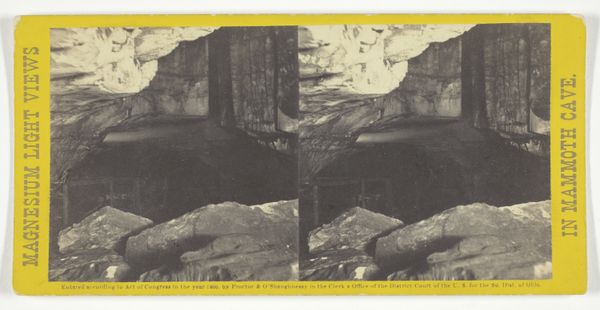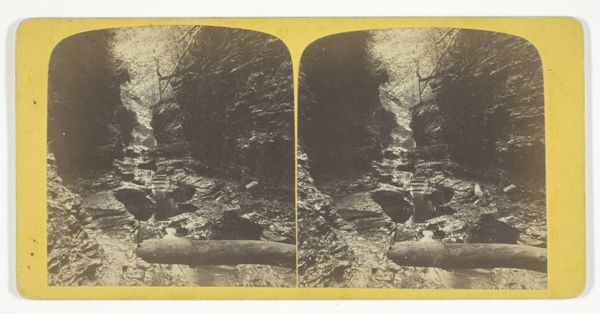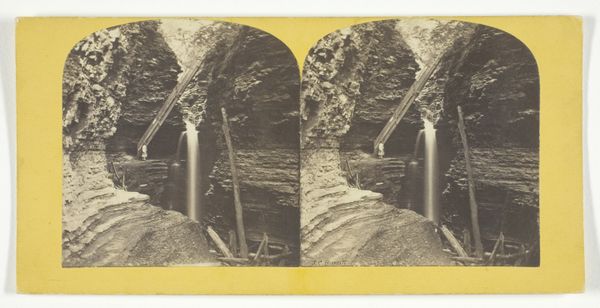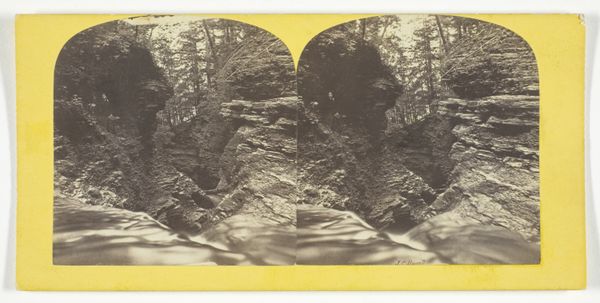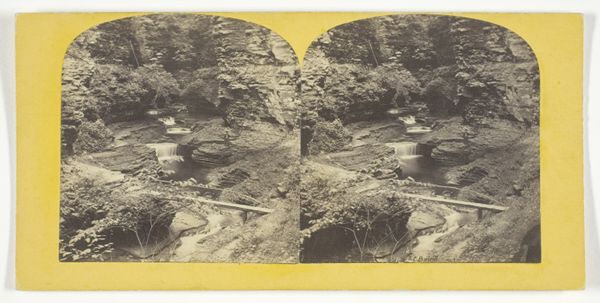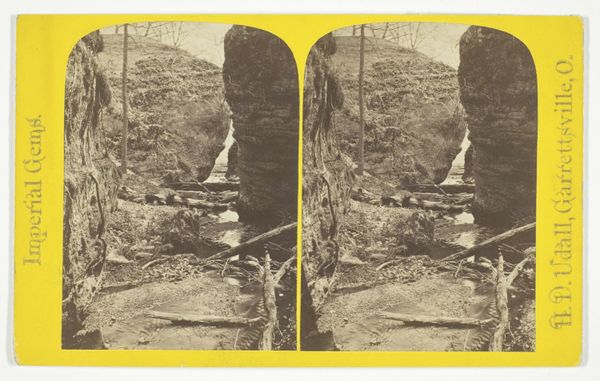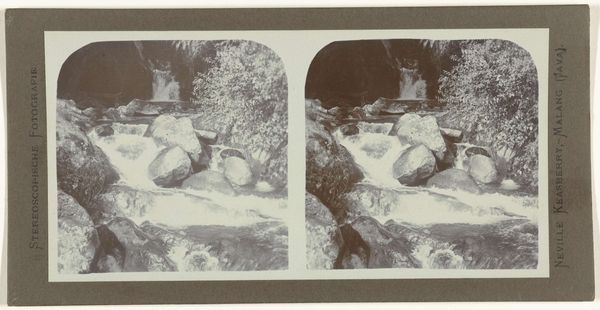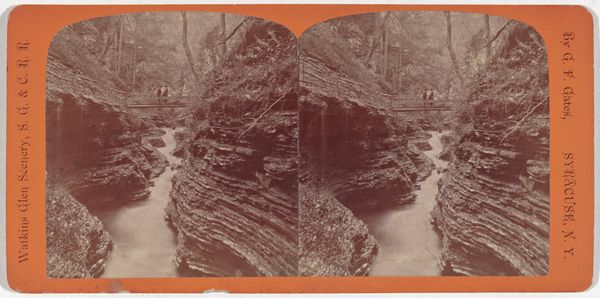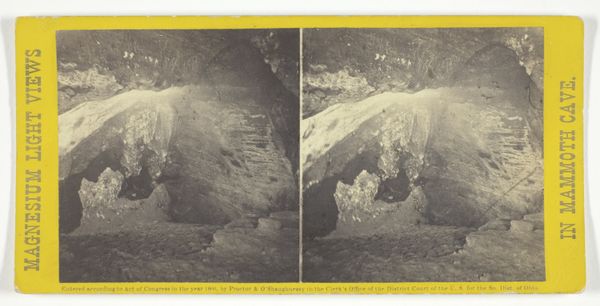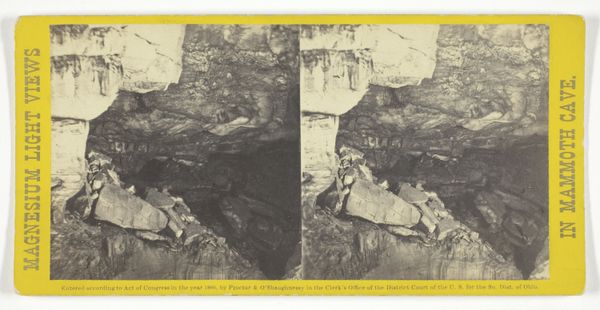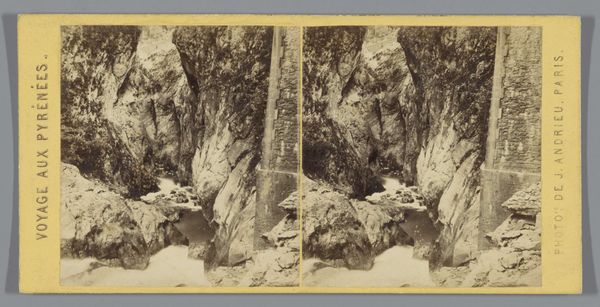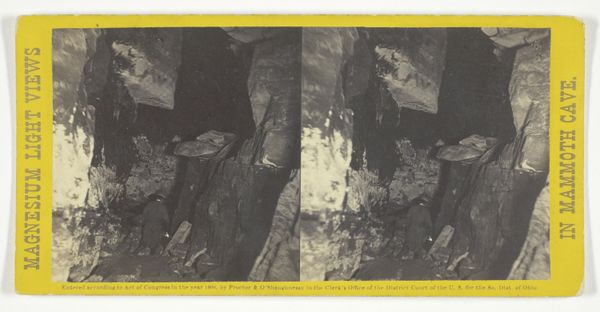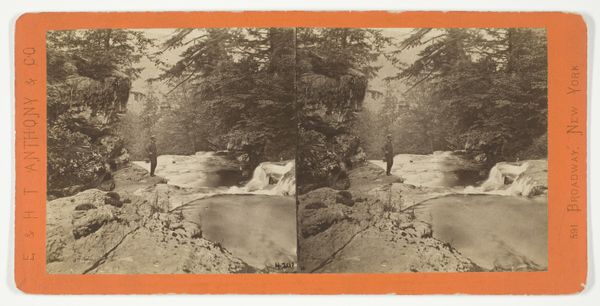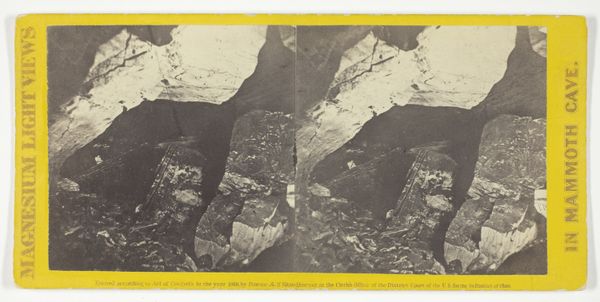
photography
#
16_19th-century
#
landscape
#
photography
Dimensions: 7.4 × 6.9 cm (each image); 8.7 × 17.6 cm (card)
Copyright: Public Domain
Curator: Here we have an anonymous photograph, dating probably from around 1875 to 1899, titled “Mountain, Valley and Stream.” Editor: It’s really quite striking; the sharp, contrasting tones and almost exaggerated depth create a sense of intense observation, of really taking stock of one's place in nature. Curator: As a stereo card, this photograph was explicitly made for mass production and consumption, offering the 19th-century viewer a vicarious experience of nature mediated by industrial means. How do you see its relation to material reality? Editor: Well, landscape photography, even from an anonymous source, tells a social story about accessibility and consumption of space. For many at that time, particularly those from marginalized communities, the ability to “wander through” as the description claims was purely fictional, curtailed by economic realities or outright prohibition. Curator: It’s fascinating to consider. This image exists not as a solitary art object but as one piece in a larger, complex distribution network. The making of photographs was of course subject to the chemical and optical technologies available and it was distributed via routes intimately involved in the wider exploitative dynamics of industrial capitalism. Editor: Exactly! There is this claim on the packaging promising a way to wander "through strange cities" which is more about a burgeoning, consumerist society being given new ways to commodify space. I find myself focusing more on the unspoken narratives of access and denial. Who profits from such beauty, and at what cost? Curator: The layering of materiality, from the photographic emulsion to the printing ink, speaks to a highly developed manufacturing chain behind even a seemingly straightforward image of nature. It’s easy to overlook that materiality but key to a true picture of 19th-century culture. Editor: It truly illustrates the need to contextualize art within social and political climates, forcing us to remember that while we contemplate beauty, it can coexist with complex systemic inequalities. The very act of taking and owning the photograph itself became a signifier. Curator: Well, this examination certainly highlights how even images claiming to show untouched landscapes reflect layers of both intended artifice and underlying labor and social practices. Editor: Absolutely; thinking about these photographic depictions of seemingly untouched wilderness also encourages critical exploration of the social framework in which these photographs were produced and consumed.
Comments
No comments
Be the first to comment and join the conversation on the ultimate creative platform.
